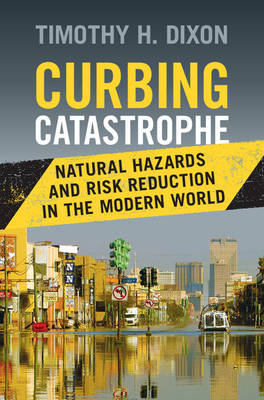
Curbing Catastrophe
Cambridge University Press (Verlag)
978-1-107-03518-8 (ISBN)
Timothy H. Dixon is a Professor in the School of Geosciences and Director of the Natural Hazards Network at the University of South Florida. In his research, he uses satellite geodesy and remote sensing data to study earthquakes and volcano deformation, coastal subsidence, ground water extraction and glacier motion. He has worked as a commercial pilot and scientific diver, conducted research at NASA's Jet Propulsion Laboratory at the California Institute of Technology, and was a Professor at the University of Miami, where he co-founded the Center for Southeastern Tropical Advanced Remote Sensing (CSTARS). Dixon was a Distinguished Lecturer for the American Association of Petroleum Geologists (AAPG) in 2006–7, and is a Fellow of the American Geophysical Union (AGU), the Geological Society of America (GSA), and the American Association for the Advancement of Science (AAAS). He received a GSA 'Best Paper' award in 2006, and received GSA's George P. Woollard award in 2010 for excellence in geophysics.
Preface; 1. Black and white swans, evolution, and markets; 2. What is a natural disaster? Where do they occur, and why? Are they different from human-made disasters?; 3. If we know so much about natural disasters, why are we so vulnerable?; 4. Japanese earthquakes and nuclear power plant failures; 5. Future earthquake disasters in Seattle and Istanbul; 6. Nuclear power, coal, and tuna: the concept of relative risk; 7. Past and future coastal flooding: Galveston, New Orleans, Bangladesh, and the specter of sea level rise; 8. What's all the fuss about global warming?; 9. Solutions; References and further reading; Index; Online appendices: Appendix 1. Additional background material and exercises for students; Appendix 2. Colour figures.
| Erscheinungsdatum | 27.01.2017 |
|---|---|
| Zusatzinfo | 6 Tables, black and white; 45 Halftones, black and white; 6 Line drawings, black and white |
| Verlagsort | Cambridge |
| Sprache | englisch |
| Maße | 158 x 235 mm |
| Gewicht | 660 g |
| Themenwelt | Naturwissenschaften ► Biologie ► Ökologie / Naturschutz |
| Naturwissenschaften ► Geowissenschaften ► Geologie | |
| Sozialwissenschaften ► Pädagogik ► Sozialpädagogik | |
| Sozialwissenschaften ► Soziologie | |
| ISBN-10 | 1-107-03518-X / 110703518X |
| ISBN-13 | 978-1-107-03518-8 / 9781107035188 |
| Zustand | Neuware |
| Haben Sie eine Frage zum Produkt? |
aus dem Bereich


